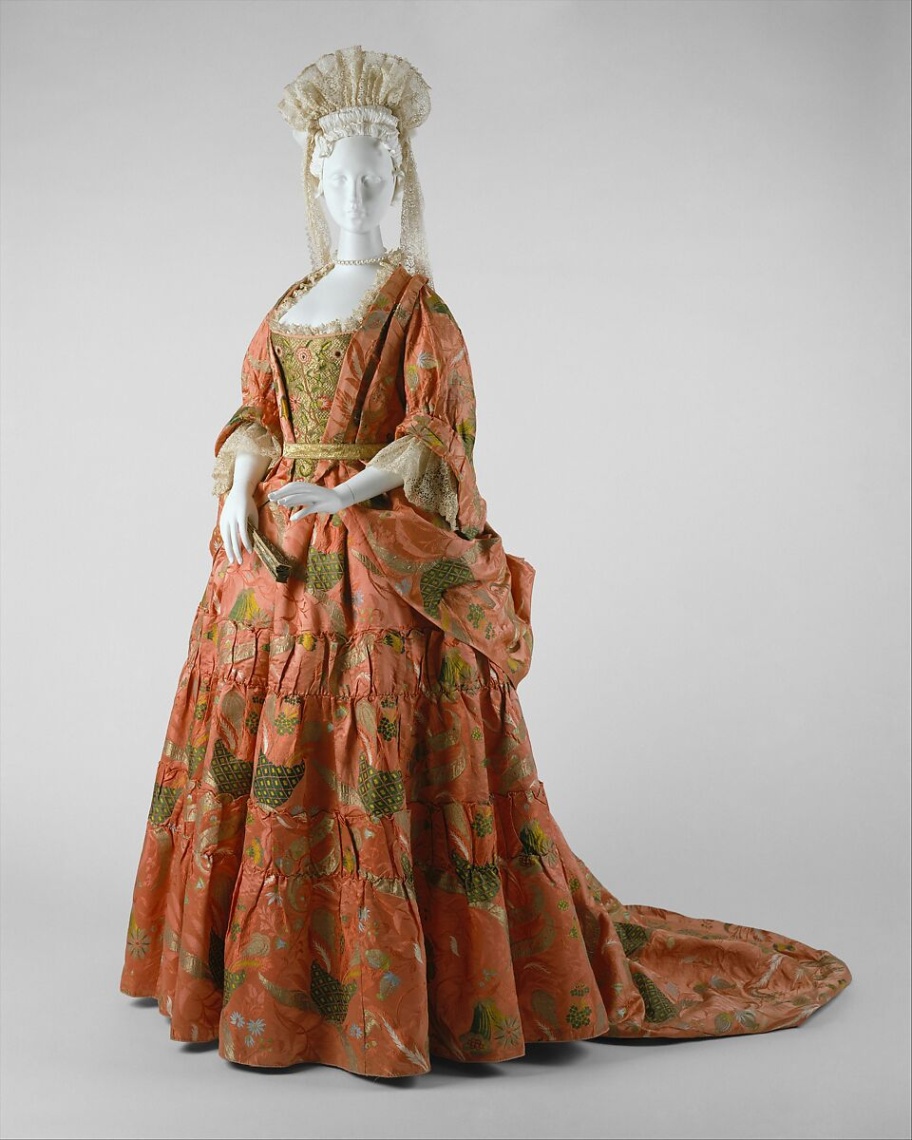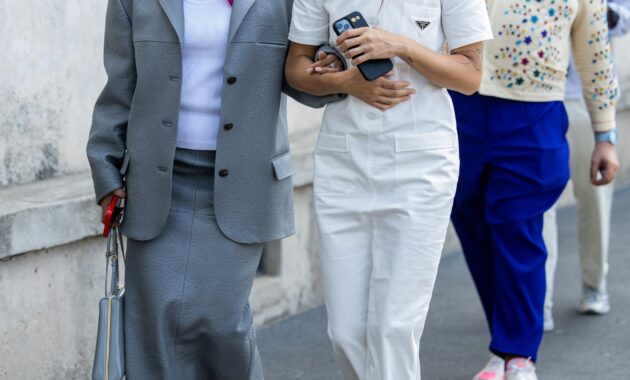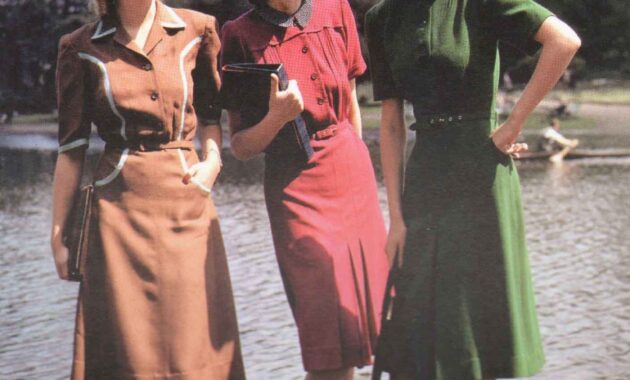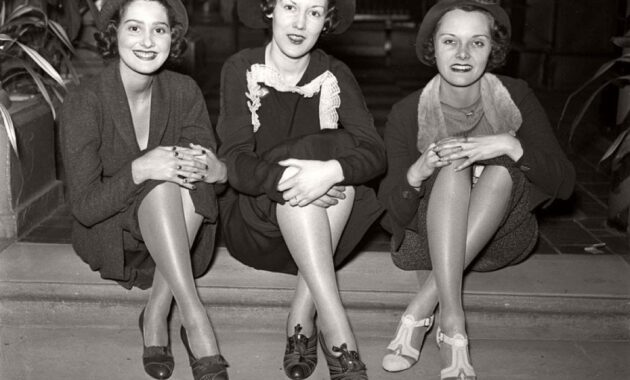Unveiling the Glamour of 18th Century Fashion
Step back in time with 18th-century fashion trends – from corsets to powdered wigs! The glamour of this era is truly something to behold, with intricate details and luxurious fabrics that are sure to make you feel like royalty.

Image Source: metmuseum.org
In the 18th century, fashion was a way to showcase one’s wealth and social status. People would go to great lengths to dress in the latest fashions, often spending a small fortune on clothing and Accessories. From the elaborate hairstyles to the extravagant gowns, every detail of a person’s Outfit was carefully curated to make a statement.
One of the most iconic pieces of 18th-century fashion is the corset. These tight-fitting undergarments were designed to cinch the waist and create the desired silhouette of the time. Women would endure hours of discomfort to achieve the coveted hourglass figure that was so prized during this era. The corset was often made of stiff materials like whalebone or metal, and laced up tightly in the back to create the desired effect.
Accompanying the corset were the wide hoops that women would wear under their skirts. These hoops, also known as panniers, were made of stiffened fabric or wire and were designed to give the skirts a voluminous, exaggerated shape. The larger the hoops, the more fashionable the woman was considered to be. Walking through doorways or sitting down could be a challenge while wearing these hoops, but the sacrifice was worth it for the sake of fashion.
The fabrics used in 18th-century fashion were opulent and luxurious, with silk, satin, and velvet being popular choices. Rich colors like deep reds, royal blues, and emerald greens were favored, adding to the overall sense of extravagance. Embellishments like lace, embroidery, and ribbons were also commonly used to enhance the beauty of the garments.
No 18th-century outfit would be complete without the finishing touch of a powdered wig. Wigs were worn by both men and women during this time, with elaborate styles that could be towering heights of curls and waves. The wigs were powdered with starch or flour to achieve a white or gray hue, giving them a distinctive look that was synonymous with the era.
It’s fascinating to see how fashion trends from centuries past can still captivate us today. The glamour and elegance of 18th-century fashion continue to inspire designers and fashion enthusiasts alike, with modern interpretations of corsets, hoops, and powdered wigs making appearances on runways and in magazines.
So why not take a step back in time and embrace the glamour of 18th-century fashion? Whether it’s incorporating a corset-inspired top into your wardrobe or rocking a powdered wig for a special occasion, there are plenty of ways to pay homage to this iconic era in fashion history. Get ready to turn heads and make a statement with your own interpretation of 18th-century style!
The Intriguing History of Corsets and Hoops
Step back in time with 18th-century Fashion trends – from corsets to powdered wigs! When it comes to iconic fashion pieces from this era, corsets and hoops certainly take center stage. These undergarments played a crucial role in shaping the silhouettes of men and women in the 18th century, creating a look that was both elegant and extravagant.
Corsets, also known as stays, were a staple in every fashionable woman’s wardrobe during this time. These tight-fitting garments were designed to cinch the waist and lift the bust, creating the coveted hourglass figure that was considered the epitome of beauty. Made from a combination of materials such as linen, cotton, and whalebone, corsets were meticulously constructed to provide both support and shaping to the wearer’s body.
The history of corsets dates back centuries, with their origins rooted in the Renaissance period. However, it was during the 18th century that corsets truly reached the height of their popularity. Women of all social classes wore corsets, as they were seen as a necessary foundation for achieving the fashionable silhouette of the time.
While corsets were primarily worn by women, men also sported their own version of this garment in the form of waistcoats. These waistcoats were designed to provide support to the torso and create a slim, tailored look. The use of corsets and waistcoats in men’s fashion highlights the importance placed on achieving a well-defined waistline and structured silhouette during this period.
In addition to corsets, hoops were another essential element of 18th-century fashion. Hoops, also known as panniers, were worn under skirts to create a wide, voluminous silhouette. These structures were made from a combination of materials such as whalebone, cane, and metal, and were often elaborately decorated with ribbons and lace.
The use of hoops in women’s fashion was a symbol of status and wealth, as the size of the hoops indicated the wearer’s social standing. The larger the hoops, the more extravagant and expensive the garment was considered to be. Hoops were particularly popular during the Rococo period, where they were used to create exaggerated, dramatic silhouettes that reflected the opulence and extravagance of the era.
While corsets and hoops may seem restrictive and uncomfortable by today’s standards, they were essential elements of 18th-century fashion that helped to define the style of the time. These garments not only shaped the physical appearance of men and women but also reflected the societal norms and values of the era.
In conclusion, corsets and hoops were key components of 18th-century fashion that helped to create the iconic silhouettes of the time. From cinched waists to voluminous skirts, these garments played a crucial role in shaping the look and feel of fashion during this period. So, the next time you step back in time and explore the world of 18th-century fashion, be sure to pay homage to the intriguing history of corsets and hoops.
From Baroque Elegance to Rococo Extravagance
Step back in time with 18th-century Fashion trends – from corsets to powdered wigs! The 18th century was a period of tremendous change in the world of fashion, with styles evolving from the opulent and elaborate Baroque era to the playful and whimsical Rococo period.
The Baroque era, which spanned from the late 17th century to the early 18th century, was characterized by its grandeur, richness, and extravagance. Fashion during this time was all about making a statement, with elaborate fabrics, intricate embroidery, and ornate embellishments. Women’s gowns were often adorned with lace, ribbons, and jewels, while men’s attire featured elaborate embroidery and brocade fabrics.
Baroque fashion was all about power and authority, with clothing designed to impress and intimidate. Women wore structured corsets to achieve the coveted hourglass figure, while men donned tailored suits with elaborate details. The overall look was one of elegance and sophistication, with a focus on wealth and status.
As the 18th century progressed, fashion began to shift towards a more playful and light-hearted style known as Rococo. This period, which emerged in the mid-18th century, was characterized by its love of pastel colors, delicate fabrics, and whimsical patterns. Gone were the heavy brocades and stiff silhouettes of the Baroque era – in their place were light and airy dresses with flowing skirts and ruffled sleeves.
Rococo fashion was all about femininity and romance, with an emphasis on softness and delicacy. Women’s gowns were adorned with intricate lace and floral embellishments, while men’s attire featured pastel colors and elaborate embroidery. The overall look was one of grace and elegance, with a focus on beauty and charm.
One of the most iconic elements of Rococo fashion was the use of elaborate hairstyles and Accessories. Women wore their hair in elaborate updos adorned with ribbons, flowers, and feathers, while men sported powdered wigs styled in intricate curls and waves. These hairstyles were a symbol of wealth and status, with the amount of powder used indicating one’s social standing.
The transition from Baroque to Rococo fashion was not just a change in style, but a reflection of the changing attitudes and values of the time. The Baroque era was characterized by its focus on power and authority, while the Rococo period embraced a more lighthearted and playful approach to fashion. This shift in style mirrored the broader cultural shift towards a more frivolous and indulgent society.
In conclusion, the evolution of fashion from Baroque elegance to Rococo extravagance in the 18th century was a reflection of the changing attitudes and values of the time. From structured corsets and elaborate brocades to flowing skirts and pastel colors, the fashion of the 18th century was a vibrant and ever-changing expression of society’s ideals and aspirations. So, why not take a step back in time and embrace the glamour and extravagance of 18th-century fashion?
Getting Coiffed: Exploring the World of Powdered Wigs
Step back in time with 18th-century Fashion trends – from corsets to powdered wigs! While corsets and hoops may have defined the silhouette of the era, powdered wigs added a touch of elegance and sophistication to the overall look. Let’s dive deep into the fascinating world of powdered wigs and uncover the history behind this iconic fashion accessory.
Powdered wigs, also known as perukes, first gained popularity in the late 17th century and reached their peak during the 18th century. Originally worn as a symbol of status and wealth, powdered wigs eventually became a fashion statement for both men and women across Europe. These wigs were made from human, horse, or goat hair and were powdered with starch or flour to achieve their signature white or gray color.
In the 18th century, wearing a powdered wig was not just a fashion choice – it was a social necessity. Men of all classes were expected to wear wigs as a sign of respectability and refinement. The elaborate styles of these wigs varied depending on the occasion and the wearer’s social status. From the simple bob wig to the extravagant full-bottomed wig, there was a powdered wig style for every taste and preference.
For women, powdered wigs were less common but still made a statement when worn. Women often wore smaller, more discreet wigs to add volume and height to their hairstyles. These wigs were adorned with ribbons, feathers, and other embellishments to create a truly eye-catching look. Whether attending a royal ball or a lavish dinner party, women of the 18th century knew how to make a grand entrance with their powdered wigs.
One of the most famous wearers of powdered wigs was Marie Antoinette, the Queen of France. Known for her extravagant style and lavish spending, Marie Antoinette popularized the towering pouf hairstyle, which required the use of a powdered wig to achieve maximum volume. Her iconic hairstyles became the talk of the town and were emulated by fashionable women across Europe.
In addition to being a fashion statement, powdered wigs also served a practical purpose. In an era where personal hygiene was not always a top priority, wearing a powdered wig helped mask unpleasant odors and keep the wearer looking and smelling fresh. The powder also helped absorb excess oils from the hair, keeping the wig looking pristine and well-maintained.
Despite their popularity, powdered wigs eventually fell out of fashion by the end of the 18th century. The rise of the French Revolution marked the decline of elaborate hairstyles and extravagant Accessories, as the focus shifted towards simplicity and practicality. However, powdered wigs continued to be worn by judges, barristers, and other legal professionals as part of their traditional courtroom attire.
Today, powdered wigs are primarily seen in historical reenactments, theatrical productions, and costume parties. While they may no longer be a mainstream fashion trend, powdered wigs continue to hold a special place in the hearts of those who appreciate the glamour and extravagance of the 18th century.
So, the next time you want to step back in time and experience the opulence of 18th-century fashion, consider adding a powdered wig to your ensemble. Whether you’re attending a themed event or simply want to channel your inner Marie Antoinette, a powdered wig is sure to make a statement and turn heads wherever you go.
18th century fashion


